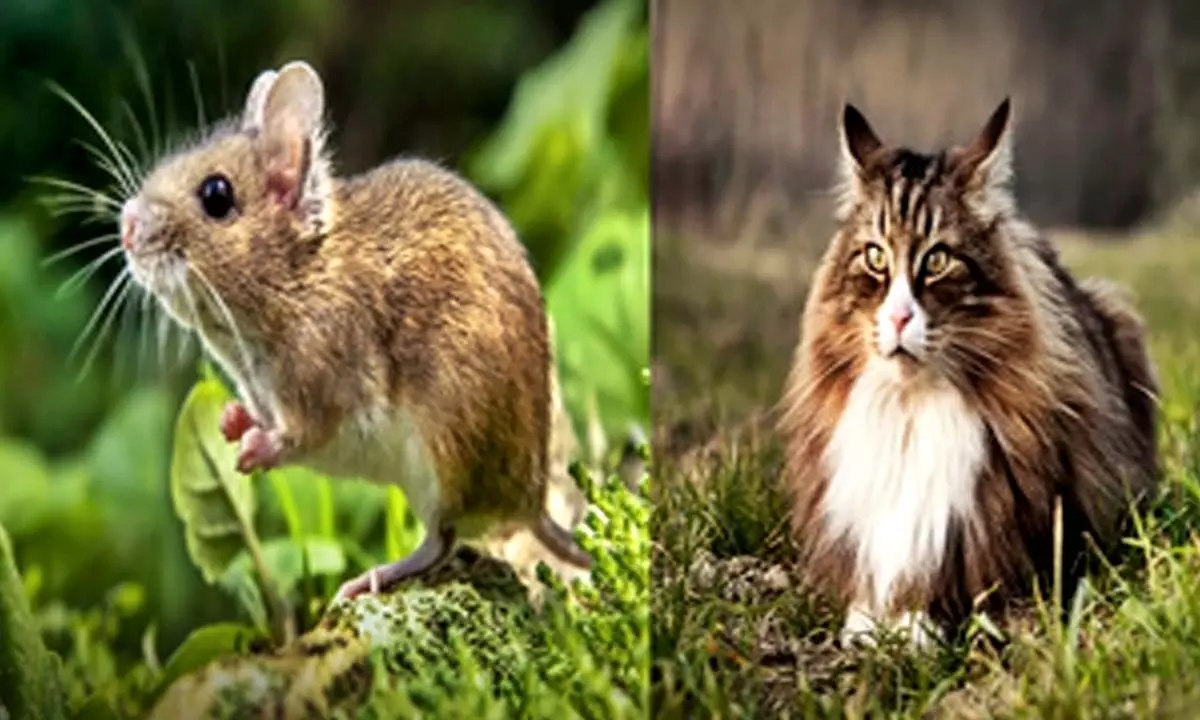Live
- Clean drains daily: Civic chief
- BRS cadres use Sankranti events to highlight govt failures
- Devotees line up for 24 hours to get tokens
- 1978 Sambhal riots case: UP govt orders fresh probe, seeks report within week
- 'Dilli ke Dil Mein Modi', BJP steps up attack on AAP ahead of polls
- PM Modi virtually lays stone for KRIS City from Visakhapatnam
- Jeans Park to Be Set Up in Ballari: 154 Acres Acquired, Says MB Patil
- 59 ultra-luxury homes sold in India for Rs 4,754 cr in 2024, 17 deals worth over Rs 100 cr
- TTD completes issuance of tokens for Vaikuntha dwara darshans
- Democracy ingrained in our lives: PM Modi at PBD convention
Just In
Experts express concern over bird flu spread in house mice, domestic cats in US

The H5N1 virus, or bird flu virus, has raised fresh concerns for humans with reports of spillover to mammals like domestic cats and mice, infectious disease experts said on Wednesday.
New Delhi: The H5N1 virus, or bird flu virus, has raised fresh concerns for humans with reports of spillover to mammals like domestic cats and mice, infectious disease experts said on Wednesday.
The US Department of Agriculture’s (USDA) Animal and Plant Health Inspection Service (APHIS), on Wednesday, reported 36 more H5N1 avian flu detections in house mice and four more virus detections in domestic cats -- from New Mexico county.
"This is indeed concerning, although there is no immediate threat. The longer-term problem is that the more a virus spreads, the more it gets chances to mutate or recombine," Dr Anurag Agarwal, Dean, BioSciences and Health Research, Trivedi School of Biosciences, Ashoka University, told IANS.
"This alone is modestly concerning in terms of future human risks. However, when the spread is occurring in animals that are present in human houses, as seen here, the concern level is higher," he added.
Biologist Vinod Scaria, in a post on X.com, said it "is concerning as the virus is moving to domestic animals with human contact".
The bird flu virus H5N1 is seen a significant increase in spillover to mammals in recent years. The virus killed a record number of birds in 2023.
It spread to otters, sea lions, minks, foxes, dolphins, and seals, among others.
The virus also killed 29 cats in Poland and 38 of 40 shelter cats in South Korea. Meanwhile, in separate incidents, the bird flu virus also affected several humans in China, Chile, the US, and India.
The World Health Organization (WHO) on Tuesday confirmed a human infection with bird flu caused by the H9N2 virus in a four-year-old child in West Bengal.
It is the second human infection of H9N2 bird flu from India, with the first in 2019, the agency said.
The virus in the child was detected by health authorities in Australia's Victoria.
In late March, H5N1 infected dairy cows in the US, and subsequently, at least three humans in Texas and Michigan have reportedly contracted the virus from sick cattle. More recently, a 59-year-old man in Mexico died after being infected with H5N2 bird flu, a strain not previously seen in humans.
"Bird flu, or avian influenza, is a viral illness that mainly infects birds. However, there's a chance it can jump to humans and other mammals who come into close contact with infected birds," Dr. Swati Rajagopal, Consultant - Infectious Disease and Travel Medicine, Aster CMI Hospital, Bengaluru, told IANS.
"The strains H5N1, H7N9, and H5N6 have raised the most concern recently due to their potential for human transmission. These infections in humans typically occur through direct contact with sick animals or contaminated environments, such as poultry farms," she added.
Avian influenza in humans can range in severity from mild, resembling a common head cold, to life-threatening. Beyond respiratory problems, symptoms of bird flu can include eye inflammation (conjunctivitis), stomach and intestinal issues (gastrointestinal symptoms), and even brain inflammation (encephalitis) and brain dysfunction (encephalopathy).
In some special cases, some people exposed to bird flu, particularly the H5N1 strain, show no symptoms at all.
"Influenza pandemics are regarded as the most important threats to human health. H5N1 influenza, spilling over from birds to humans, could be a possible origin of the next major pandemic," Gautam Menon, Dean of Research and Professor of Physics and Biology at Ashoka University, told IANS.
He called for OneHealth approaches that focus on human, animal, and environmental health together, to tackle the rising threat.

© 2024 Hyderabad Media House Limited/The Hans India. All rights reserved. Powered by hocalwire.com






